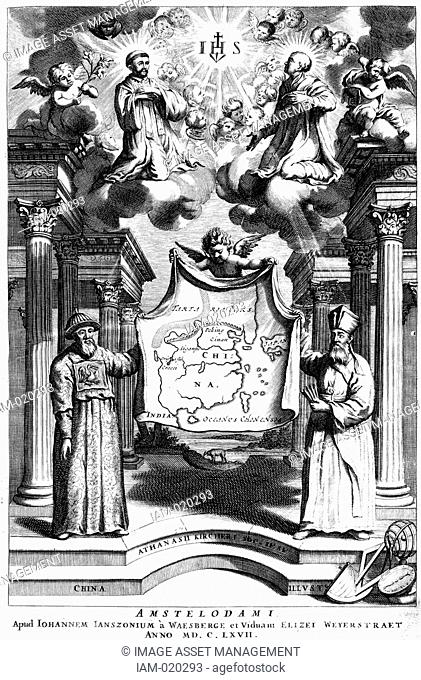Servant of God Thomas Esteban, SJ
Born: September 23, 1879
Died: January 30 1934 (date when all hope to save him ended)
 Thomas Esteban was born in Sesma, a small village in Navarre, Spain. He studied at the local school but at twelve, he was sent to the school in Irache operated by the Piarist Fathers. At fifteen, he went to the minor seminary in Pamplona and a year later he advanced to Pamplona’s St Francis Xavier Seminary for his philosophical studies and later in theology. For his final year in 1902 he went to the seminary of Sts Valero and Braulio in Saragossa. He was ordained in Pamplona on Sep 21, 1904, and celebrated his first Mass on October 9 in his home parish in Sesma.
Thomas Esteban was born in Sesma, a small village in Navarre, Spain. He studied at the local school but at twelve, he was sent to the school in Irache operated by the Piarist Fathers. At fifteen, he went to the minor seminary in Pamplona and a year later he advanced to Pamplona’s St Francis Xavier Seminary for his philosophical studies and later in theology. For his final year in 1902 he went to the seminary of Sts Valero and Braulio in Saragossa. He was ordained in Pamplona on Sep 21, 1904, and celebrated his first Mass on October 9 in his home parish in Sesma.
As a diocesan priest, Fr Esteban was assigned by his bishop to assist in the parish in Melida and after a few months he was sent to the parish in Mendigorria. For some years he had thought about the Society of Jesus and had known many Jesuits at the seminary in Pamplona. In 1909 a Jesuit did a mission at his parish and soon after it ended, Fr Esteban resolved to enter the Society. With the permission of his bishop he left the diocese and started his novitiate training at Loyola at the age of thirty. Though a priest, he underwent the two-year training like any seventeen-year-old novice, serving at table, worked in the kitchen, laundry and so on. After he professed his vows on April 17, 1911, he spent one year at Burgos refreshing his knowledge of the classics before going on to review philosophy and theology at Ona in 1912.
In 1913, the Jesuit province of Castile, to which Fr Esteban belonged, was given China as its mission and he thus thought of serving in the Orient. At an infant his mother had dedicated him to St Francis Xavier, who was also a Navarrese and Fr Esteban now hoped to make that offering complete by becoming a missionary. With China in mind, he took as his motto: “To save many souls and to give my blood and life for him.” Fr Esteban wrote to his superiors volunteering for the mission but before he could receive a response he was assigned to teach Latin at the minor seminary in Durango. During the two years there, his thoughts and desires were in China and in his diary, he wrote: “I keep thinking of, and asking the same thing of our Lord, to work, suffer, and to die for him on the Chinese mission, saving many souls.” His request was granted during the summer of 1916 and in September he went for his tertianship in Manresa. And finally on August 24, 1917, together with five other missionaries, he departed Barcelona for the East.
As the Suez Canal was then closed to maritime traffic, the missionaries had to sail via the Atlantic a much longer route. They arrived in New York City on Sep 6, and sailed across the US and on Sep 29, sailed from San Francisco to Shanghai, arriving there on October 31. They arrived at the mission HQ at Wuhu, in the province of Anhui on November 12.
Missionaries in China usually needed at least two years of intensive language study but Fr Esteban was sent to Yingshan to assist a French Jesuit missionary a few months after his arrival. Yingshan was mostly Catholic, so he was able to continue his language study while serving the people as a priest. He spent five years there and was known for his kindness, simplicity and amiability. In 1922 he was given the mission in Wuyuan which was a difficult mission as the 400 Christian families had not had a priest for decades and spoke a dialect totally different from the Mandarin which Fr Esteban had learned. Despite the challenges and the physical difficulty as Wuyuan was vast and mountainous, Fr Esteban, with the aid of loyal catechists visited the Christian families regularly to carry out his priestly ministry.
The Chinese communists in 1927, who had a strong foothold in the south where Fr Esteban had his mission, took over Wuyuan on Dec 17, 1931. Fr Esteban was soon arrested and the communists led him on a five-day walk to the HQ in Geyuan, in Jiangxi province. His captors were very badly in need of money and decided to use him to demand a high ransom on his life. They made Fr Esteban write letters to his superiors in Wuhu, to the French consul in Nanjing and to the Spanish minister in Beijing stating that the price of his freedom was 100,000 yuan. Although the Jesuits, consul and minister resorted to every diplomatic means available to secure Fr Esteban’s release, all came to naught as the communists did not want diplomacy but money. Since the demanded ransom was not coming, the desperate communists reduced the sum to 20, 000, then to 10,000 and finally made Fr Esteban write to his superior for 2000. In his letter to his bishop, Fr Esteban said: “Three times I was placed on public display and once without clothes, I had to endure the people’s ridicule; hatred abounds around me; three times I thought my end had come. I fear nothing. Either live in order to work for Jesus, or die to reign with him.”
Since diplomacy had failed, the Jesuits now sought to negotiate directly with the communists. Lao Lei, Fr Estenban’s former servant and another Chinese named Wuyulai served as intermediaries. Wuyulai was known to the communists and thus was able to secure passports to enter communist-held territory. He negotiated with the communists and the initial price fixed for the priest’s release was 30,000 yuan but Fr Esteban warned the Jesuits against sending money to the communists. After several weeks of silence, Wuyulai appeared with a letter in which the ransom was reduced to 2000 yuan. The intermediary had seen Fr Esteban and reported that his arms and body were covered with sores. On Feb 2, 1933, Lao Mei with 2000 yuan hidden in his ragged jacket, set out with Wuyulai for the prison in Geyuan. They found Fr Esteban leaning against a wretched bed which he shared with another prisoner in a house about a mile from the city. Initially Fr Esteban did not recognize his former servant dressed in such ragged clothes but knew his friend had come when he heard the familiar voice.
The communist chief retracted and refused to give a passport for Fr Esteban to leave in exchange for the 2000 yuan he had earlier agreed on. He now wanted 20,000 yuan instead. Sorrowfully the intermediaries left and sent a telegram to the Jesuits in Wuhu on 11 Feb: “We are deceived; Esteban is not returning.”
The Jesuits never gave up hope. In April Wuyulai again went back to the prison and brought Holy Communion to Fr Esteban. There in the dirty room, Fr Esteban received his Lord, having been deprived of Holy Communion for fifteen months. In July the communists reduced the ransom price to 3000, and the Jesuits knew that Fr Esteban was in poor health. Wuyulai made another visit to the prison toward the end of 1933, but Fr Esteban was not there and it was learnt that the missionary had been taken to a hospital.
On Jan 1 1934, Wuyulai again set out to gather more information about Fr Esteban but nothing was ever heard from Wuyulai. He simply disappeared and negotiations came to an end. As a result, the date of Fr Esteban’s death was unknown but the Jesuits chose Jan 30, 1934 as that was the day when all hope to save him ended. Perhaps Wuyulai did reach the prison, and because the missionary was already dead, the communists may have caused the intermediary to disappear.
Some years later, after the communists had abandoned Jiangxi, the Jesuits sent a party to search for Fr Esteban’s remains. They found the town’s grave digger and persuaded him to lead them to where the priest had been buried. And there between two trenches they found a half-covered worm-eaten coffin and the remains were identified as those of Fr Esteban by an examination of the teeth. Fr Esteban’s remains were taken to the mission HQ in Wuhu and buried there.
Fr Esteban’s cause was initiated within a few years of his death but because of subsequent problems in China, the cause has not been able to advance.
